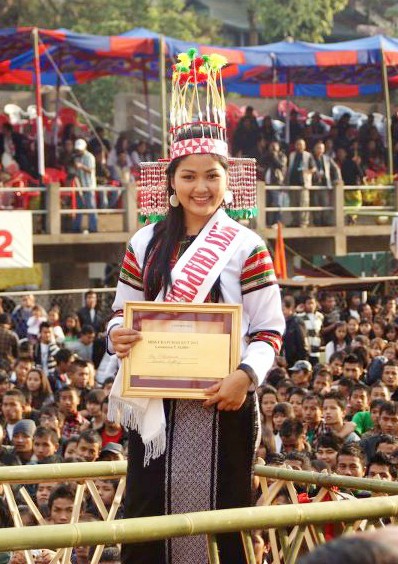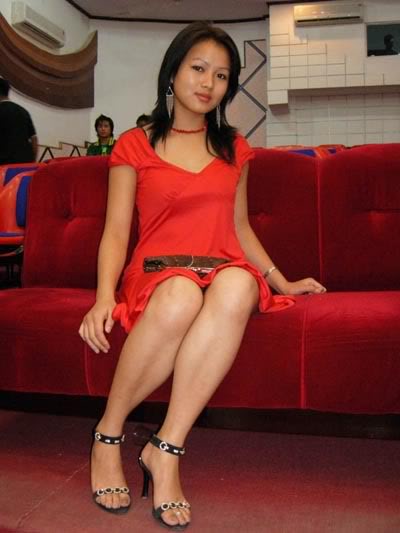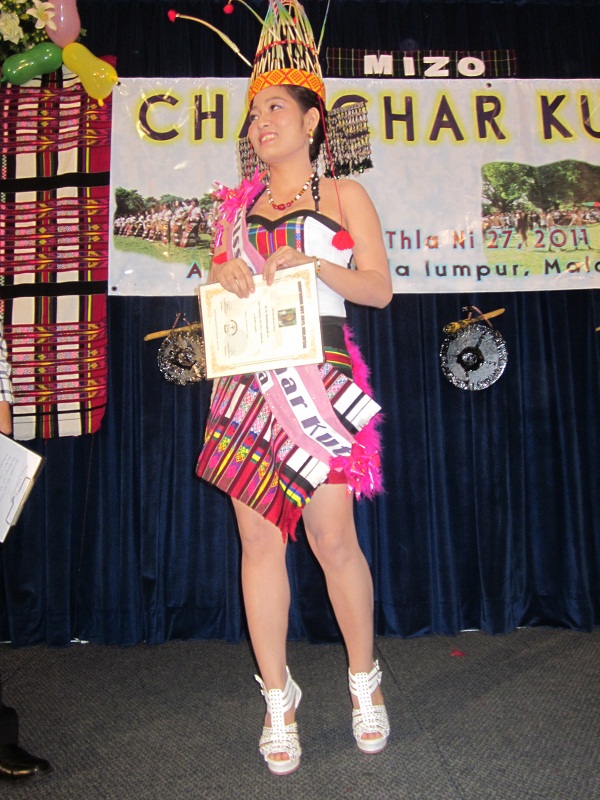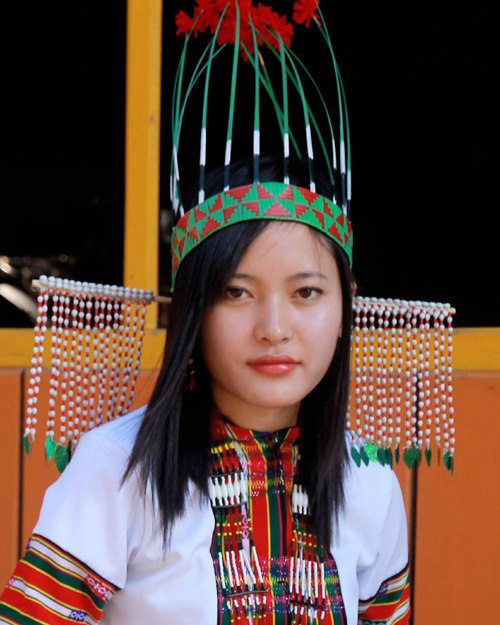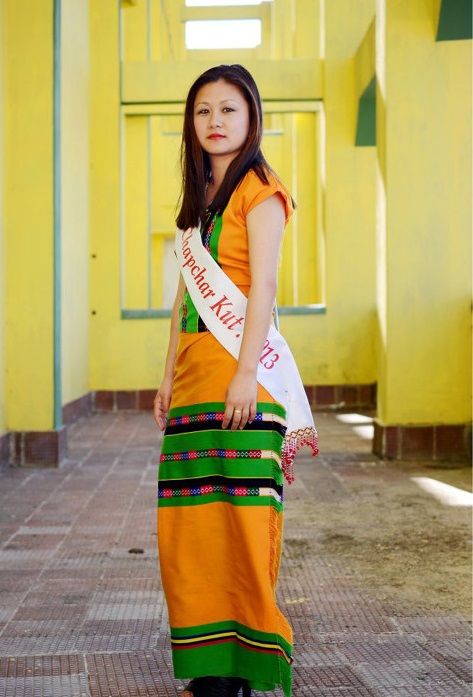Chapchar Kut
(→Sources) |
|||
| Line 1: | Line 1: | ||
| − | [[File: | + | [[File: Chapchar Kût 2012.jpg|Miss Chapchar Kût, Aizawl 2012|frame|left|500px]] |
{| class="wikitable" | {| class="wikitable" | ||
|- | |- | ||
| Line 13: | Line 13: | ||
==Sources of this article== | ==Sources of this article== | ||
| + | [[File: chapchar2014.jpg|Chapchar Kut 2014: the ‘Pawhlohtlawh’ dance (Photo: Adam Halliday, [http://indianexpress.com/photos/picture-gallery-others/today-in-pics-march-7-2014/#mizo3 IndianExpress])|frame|500px]] | ||
[[File: Mizo Chapchar Kut 2007.jpg|Miss Chapchar Kut 2007|frame|500px]] | [[File: Mizo Chapchar Kut 2007.jpg|Miss Chapchar Kut 2007|frame|500px]] | ||
[[File: Mizo Chapchar Kut 2008.jpg| Chapchar Kut festival 2008: Photo: [http://s267.photobucket.com/user/sailojohn/library/?sort=3&page=1 John Sailo] [http://necelebs.blogspot.in/ NECelebs]|frame|left|500px]] | [[File: Mizo Chapchar Kut 2008.jpg| Chapchar Kut festival 2008: Photo: [http://s267.photobucket.com/user/sailojohn/library/?sort=3&page=1 John Sailo] [http://necelebs.blogspot.in/ NECelebs]|frame|left|500px]] | ||
[[File: Mizo Chapchar Kut 2008a.jpg| Chapchar Kut festival 2008: Photo: [http://s267.photobucket.com/user/sailojohn/library/?sort=3&page=1 John Sailo] [http://necelebs.blogspot.in/ NECelebs]|frame|500px]] | [[File: Mizo Chapchar Kut 2008a.jpg| Chapchar Kut festival 2008: Photo: [http://s267.photobucket.com/user/sailojohn/library/?sort=3&page=1 John Sailo] [http://necelebs.blogspot.in/ NECelebs]|frame|500px]] | ||
[[File: Malaysia-ah Mizo Chapchar Kut 2011.jpg|Malaysia-ah Mizo Chapchar Kut 2011|frame|500px]] | [[File: Malaysia-ah Mizo Chapchar Kut 2011.jpg|Malaysia-ah Mizo Chapchar Kut 2011|frame|500px]] | ||
| − | |||
[[File: Chapchar Kût 2013.jpg|Miss Chapchar Kût 2013: Lalrinhlui Hrahsel |frame|500px]] | [[File: Chapchar Kût 2013.jpg|Miss Chapchar Kût 2013: Lalrinhlui Hrahsel |frame|500px]] | ||
[[File: Chapchar Kût 2013b.jpg|Miss Chapchar Kût 2013 |frame|left|500px]] | [[File: Chapchar Kût 2013b.jpg|Miss Chapchar Kût 2013 |frame|left|500px]] | ||
Revision as of 23:38, 9 March 2014
You can update or correct this page, send photographs and/ or |
Contents |
Sources of this article
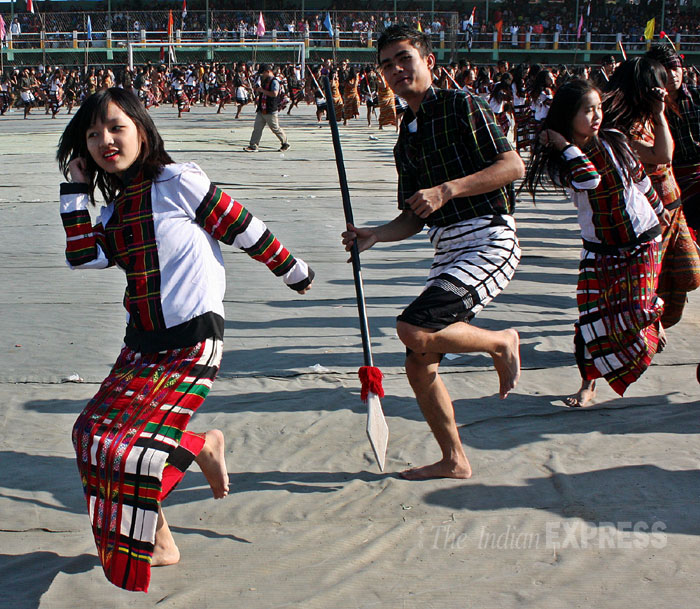
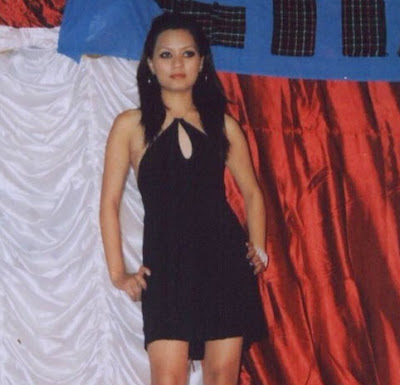
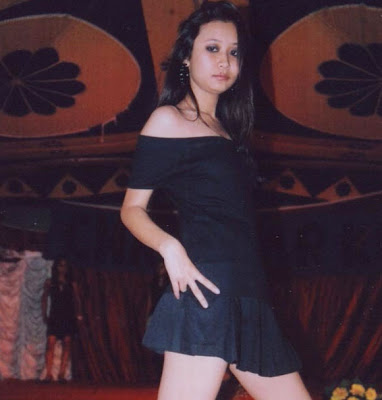
1) The Chapchar Kut Festival
2) Chapchar Kut: Rhyming with nature
Dhirendra Kumar
MillenniumPost 2 March 2014,
3) S Singlianmang Guite
4) webindia123
The main Mizo festivals
In Mizoram, there are three main festivals in a year. Festivals are called Kut in Mizo language. The three Kuts are Chapchar Kut, Mim Kut and Pawl Kut. All the three festivals are connected with agricultural activities. The festivals are celebrated with feasts and dances
When
At the end of February, when winter starts receding, the Mizos prepare the land for fresh planting. There are few days of relaxation before the serious business of sowing starts and that is when the Chapchar Kut festival is celebrated with gaiety and fervour across the state. The Chapchar Kut is one of the oldest festivals of Mizoram and has a great cultural significance. In 2014 the festival was celebrated on 7 March.
Chapchar Kut was celebrated after completion of the cutting of jhums. It was a thanksgiving festival. The villagers faced many dangers and difficulties in cutting down dense forests with their simple Daos and axes. They would organise a big feast in the month of March to celebrate the success in jhum cutting. The festival continued for seven days and even beyond if the villagers would afford it. A few days before the day is fixed for the festivities, hunting parties from the village would go out in the forests and rivers for hunting wild animals, trapping birds and catching fish. On this occasion Zu would be brewed in a large quantity.
The Chapchar Kut Festival is an annual harvest festival of Mizoram which observes the advent of spring. It is the time when bamboos and trees that have been cut down to make place for 'jhum' (seasonal farming) are awaited to dry to be burnt. It is one of the oldest festivals of Mizoram and lasts for seven days.
The people of Mizoram practice jhum cultivation which is the main basis of farming and also the source of income in the region. Trees are cut down to make space for cultivation and are kept aside for several days to be dried and burned later. Chapchar Kut calls for the time of revelry when these chopped trees are kept for drying.
The celebration, categorized under the spring festival umbrella, is the most important festival and the only one regularly observed during the first week of March in Mizoram.
Chapchar Kut marks the preparation before the onset of the sowing season and is celebrated during the time when jungles are cleared, bamboos and trees are cut down, and the land is prepared for jhum cultivation.
Origin
Chapchar Kut literally means - a festival held during the period when the bamboos and trees that have been cut down are being awaited to dry to be burnt for jhumming. During this brief layoff period of jhumming, the Mizo ancestors could have all the time for themselves. They spend their leisure hunting games, fishing, etc.
The Chapchar Kut festival evolved sometime between 1450 -1600 A.D. when the Mizo forefathers inhabit Lentlang. In the olden days, the festival could last for days and in the run up to the grand finale, there are well laid down steps to be followed. Everyone in the village have a role to play; of course, the youths were most involved in every stage of the preparation and in the festival itself.
How the festival is celebrated
Folk music and traditional dance performances are the major festivities of Chapchar Kut. And people from various tribal communities, from all ages and walks of life come together and participate in this festival. Dressed in traditional attire, different tribal communities compete with each other in dance and music.
Heroic deeds for the men
To attain a position of distinction, a Mizo had to go through a series of ceremonies and perform many feats of heroic deeds. These ceremonies are always accompanied by a feast and to this feast, friends from nearby villages are invited - hence, Khuallam is the dance for the visitors or guests. The 'Chheih lam' is another community dance performed by both men and women. The war dance 'Solakia', a prerogative of the male population of the community, is accompanied by rhythmic beating of the drums Exhibition and sale of indigenous Handloom and Handicraft products and other tourist attractions like flower show, food festival, musical competition and different traditional games are also organized during the Chapchar Kut festival.
The festivities involve folk music performances which have a major appeal in the Chapchar Kut Festival. Liquor indulgence once used to be the key mode of merriment but with passage of time it has been done away with and now the focus is only on music and dance. Dressed in colourful traditional apparel, various tribal communities compete with each other in dance and music. A bamboo dance is also performed where only women take part. The men sit on the ground and tap the bamboos in rhythm against each other. It is a beautiful sight to watch the people of Mizoram dancing, dressed in outfits vibrant in colour and hats made from beads and feathers.
The six days
The first day
On the first day of the festival, pigs would be killed by the members of the chief's clan for the feast. Pork in big quantities would be eaten and lot of Zu would be consumed. This day was called Lushai Vawk Tlah Ni which literally means the day on which the Lushias kill pigs.
The second day
On the second day, members of the other clans in the village would kill their pigs for the village feast.
The third day
On the third day, which was known as Kut day, Zu would be taken in the houses in which someone had died during the year. On this day before sunset in the evening people particularly mother and children dressed in their best would gather in the open space in the village at the Lungdawh, which is a stone platform put up as a memorial to the dead, bringing with them rice, boiled eggs and meat. One would try to force the food down the throat of one's friends. This was known as Chhawnghnawt. After sunset the young boys and girls would get together in the houses of well-to-do-villagers. They would spend the night in drinking, singing and dancing.
The fourth day
The next day was known as Zupui Ni which was the day of drinking a particular type of liquor called Zupui which was brewed from well husked rice. In the evening before sunset, young men and girls dressed in their best would gather in the open space of the village for singing and dancing. They formed a circle in which the young men would have their arms across girls who would alternate between the boys. Within the circle would be the drummer or gong beater, who would chant while the young people would sing and move slowly keeping time with the song. This dance was known as Chai dance. During the dance, the children of the village would go on serving the dancing boys and girls Zu of the best variety in bamboo cups.
The fifth day
The next day was called Zuthingni or the day of drinking a special type of Zu. On this day there would be a general dance in the village. Zu drinking would go on. The dance would continue day and night until the Zu supply would run short.
The sixth day
The last day of the festival was known as Ziapur ni or the day of rest after eating and drinking. On this day people would relax after hectic days of festivals. They would not go out to the jungle which was believed would bring bad luck.
Bamboo and the other main dances
On this day people of all ages, young and old, men and women dressed in their colorful costumes and distinctive head gears and jewelries, assemble and perform various folk dances, singing traditional songs accompanied by beating of drums, gongs and cymbals. They dance in joyous celebration of life, each team displaying the best of its region. These are generally group dances with a lot of bonhomie and courting woven into them. Some dances are strictly martial danced by strong virile warriors with their weapons and trophies. One dance perennially popular is the Cheraw or the 'bamboo dance' so called as long bamboo staves are used for this dance. This is the most colourful and distinctive dance of the Mizos requiring skill and an alert mind to perform.
The other main dances performed during Chapchar Kut are Khuallam, Chheihlam, Chai and Sarlamkai. 'Khual lam' is an auspicious dance performed by a group of dancers celebrating new beginnings. It is also a welcome dance for guests during community festivities.
The bamboo dance is one of the major attractions of Chapchar Kut where only women folk take part in it. It is a very interesting dance form where the men folks tap the bamboos and open and close in rhythmic beats as the dancer steps in and out gracefully to the beats of the bamboos. The festival is an amazing sight with people dressed in outfits vibrant in color and hats made from beads and feathers.
A time for forgiveness
Designed to be a festival of joy, all disputes and differences that may be there in the community should be settled, even altercation between married couples was a taboo during the celebration of the festival. Abundant supply of meat must be there and home brewed liqour must be over-flowing to keep their spirit high. They danced away all their cares and made merry all night long. That sums up how the Mizos celebrate Chapchar Kut in the olden days when they were heathens.
In Manipur
The substantial Mizo community of Manipur celebrates Chapchar Kut on the same day as the celebrations in Mizoram.
Since 2013 the festival has been celebrated at the State-level (i.e. at the all-Manipur level) at Chiengkawnpang under the auspices of the Chiengkonpang branch of the Young Mizo Association, with other youth organisations of the community in Manipur pitching in. The district administration of Churachandpur helps with the arrangments.
Various cultural troupes from within the community and its sister tribes perform dances associated with their culture during the day’s event while the evening session consists of a costume parade that seeks to showcase diversified costumes and evolving trends in couture,'as well as to enthral the crowd,' The Sangai Express reported.
Chapchar Kût 2013
Miss Chapchar Kût 2013: Lalrinhlui Hrahsel
